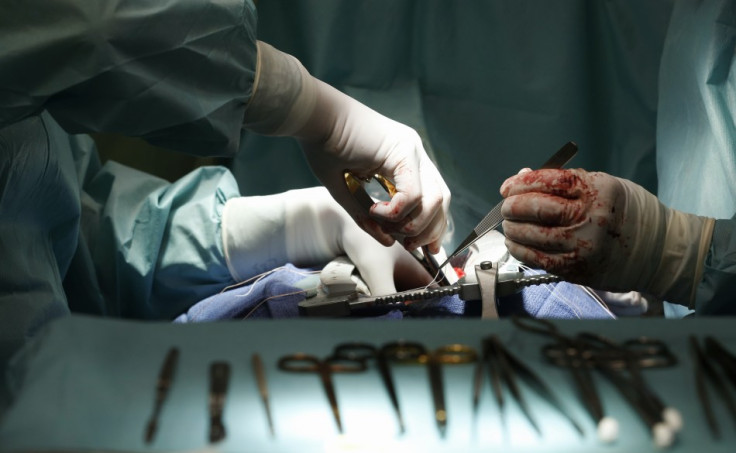Australian Doctors Successfully Complete World's First 'Dead Heart' Transplants
Doctors at Sydney hospital successfully transplant dead hearts into human patients

Australian doctors have successfully used dead hearts in three landmark transplant operations in Sydney.
Previously, hearts could only be taken from patients suffering from critical brain injuries while the organs were still beating. But doctors at St Vincent's Hospital in New South Wales have developed a solution that allows them to preserve the removed hearts.
The solution, which was developed with the Victor Chang Cardiac Research Institute, enabled doctors to transplant the organs into 57 year-old Michelle Gribilas, 44 year-old Jan Damen, and a third patient, who is still in recovery.
One of the hearts had stopped beating for 20 minutes before it was brought back to life, placed on a machine, and injected with the preservation solution.
Kumud Dhital, a surgeon at St Vincent's Hospital, said he "kicked the air" when the first of the three "dead heart" operations was successful.
"They are the only three in the world," he said. "We know that the heart, like other organs, can be reanimated, restarted, and only now have we been able to do it in a fashion whereby a heart that has stopped somewhere can be retrieved by the transplant team, put on the machine, and transplanted."
The team said the development could increase the number of lives saved by heart transplants by 30%, due to the increase in the supply of suitable donors.
Transformed
The first successful transplant patient, Michelle Gribilas, was suffering from congenital heart failure, but says her life has now been transformed.
"I was very sick before I had it," she said. "Now I'm a different person altogether. I feel like I'm 40 years-old. I'm very lucky."
The second patient, father-of-three Jan Damen, said: "I feel amazing. I'm just looking forward to getting back out into the real world."
Cardiologist and unit director Peter MacDonald said: "We've been researching to see how long the heart can sustain this period in which it has stopped beating.
"We then developed a technique for reactivating the heart in a so-called heart-in-a-box machine. To do that, we removed blood from the donor to prime the machine and then we take the heart out, connect it to the machine, warm it up and then it starts to beat."
Maureen Talbot, a senior cardiac nurse at the British Heart Foundation, said the successful operations are a "significant development" that will hopefully increase the number of donor hearts available for transplants in the future.
However, she stressed that the number of registered donors urgently needs to be increased because less than a third of people are currently signed up.
© Copyright IBTimes 2025. All rights reserved.





















